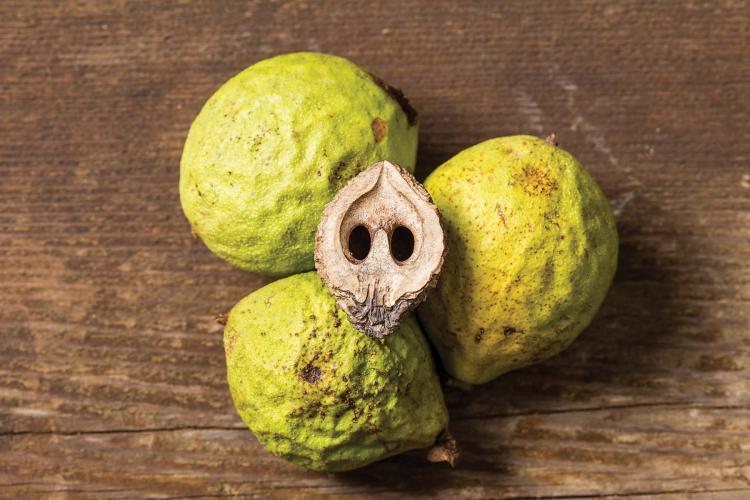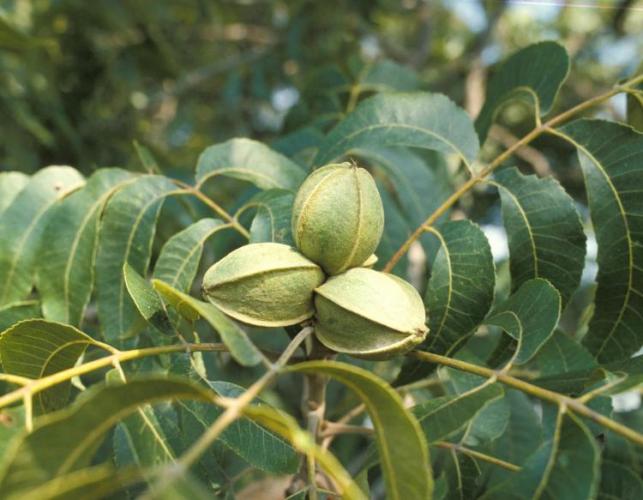The beginning of fall is a great time to gather homegrown nuts in Missouri. Our top three featured nuts that fruit in September and October are black walnuts, pecans and hickory.
Missouri is the world’s top producer of black walnuts which are used in many baking recipes and are our state tree nut. A green rounded husk about the size of a tennis ball covers the dark nut. The kernel is oily, sweet and edible. Walnuts are a hard nut to crack and first-timers will need tips to succeed.
An easier nut to gather is the pecan. It’s naturally splitting husk and thin shell make it fairly easy to gather and process. Pecans are one of the most important cultivated nuts of North America and are tasty in pies.
Just as flavorful as pecans but lesser known are hickory nuts. Missouri has over eight species of hickories and the better tasting nuts come from shellbark, shagbark and mockernut trees. Hickory nuts are an important food for many species of wildlife including squirrels, turkeys and ducks.
Pecan Fun Facts
- The name "pecan" started as an Illinois (Native American) word, "pakani," which French-Americans learned and turned into "pacane" (try saying that with a Creole accent); this be-came our American English "pecan."
- The pecan has been cultivated since 1766, with over 500 horticultural selections made since then to improve hardiness, productivity, and the nuts’ size, flavor, and ease of shelling.
- Pecans are one of the most important cultivated nuts of North America. The wood is used occasionally for furniture, flooring, tools, and more.
- Typically a southern species, pecan once grew only in the southeastern part of the state. It is thought that Native Americans cultivated this tree farther north and helped spread it. Pecans with large, thin-shelled nuts are now grown in commercial orchards.
To learn more about pecans, visit the MDC’s Field Guide.
Learn more about native edibles and walnut harvesting tips in this Missouri Conservationist article.






Recent Posts
























